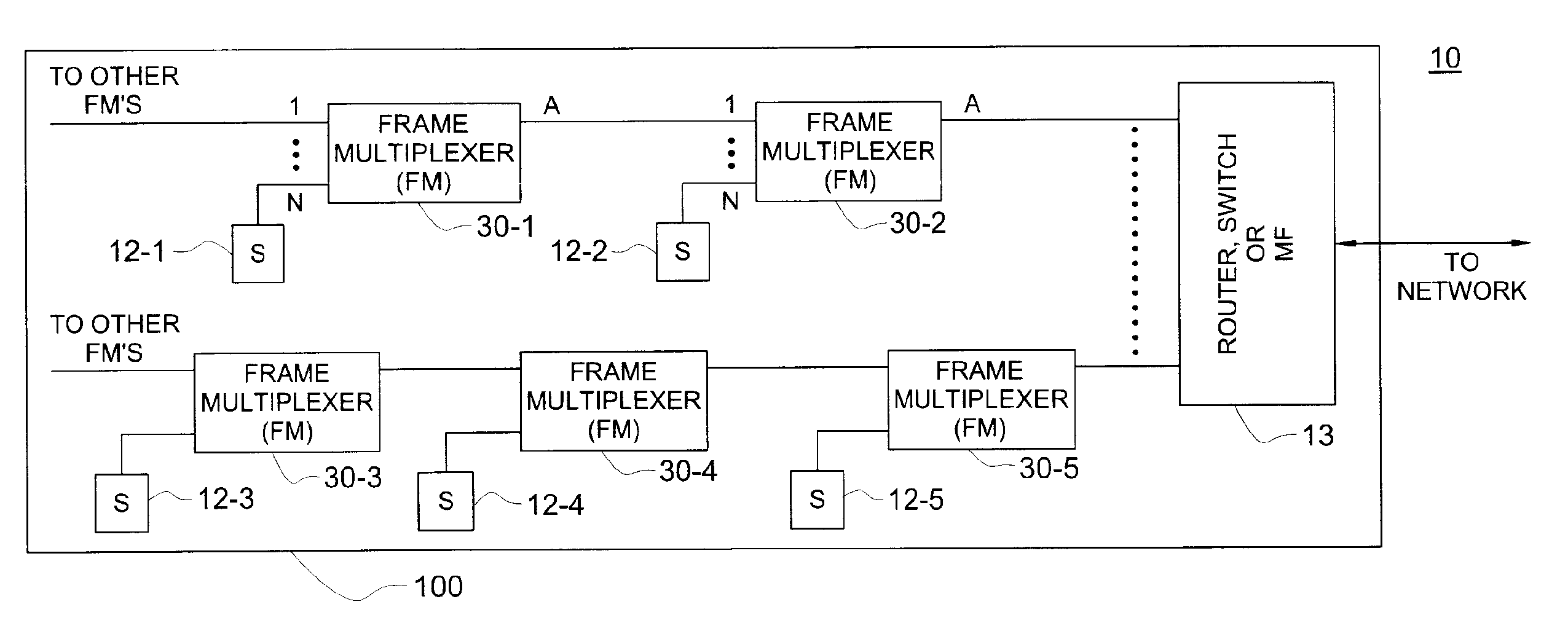Systems and methods for increasing capacity in collision-based data networks
a data network and collision-based technology, applied in the field of multi-access data networks, can solve the problems of reducing the capacity as measured by throughput, avoiding collisions, and reducing the possibility of data collisions
- Summary
- Abstract
- Description
- Claims
- Application Information
AI Technical Summary
Benefits of technology
Problems solved by technology
Method used
Image
Examples
Embodiment Construction
[0017] Prior to beginning a detailed discussion of some illustrative embodiments of the invention, it might be helpful to review the basic architecture of Ethernet protocol implementations. In terms of Ethernet local area network (LAN) configurations, there are bus and tree configurations. The bus configuration allows direct access by every station. Ethernet CSMA / CD was designed for this purpose, i.e., to a share medium for all stations.
[0018] The tree structure is a hierarchical structure where stations are located at the bottom of the hierarchical structure and the gateway to the external network is located at the top of the hierarchical structure. The number of layers in between the top to bottom layers is based on the number of stations and traffic volume. In the tree structure, each station has its own medium (cable, air link) to the next level in the hierarchy. Ideally, the second least level should be a router which would eliminate the shared medium issues. For economical re...
PUM
 Login to View More
Login to View More Abstract
Description
Claims
Application Information
 Login to View More
Login to View More - R&D
- Intellectual Property
- Life Sciences
- Materials
- Tech Scout
- Unparalleled Data Quality
- Higher Quality Content
- 60% Fewer Hallucinations
Browse by: Latest US Patents, China's latest patents, Technical Efficacy Thesaurus, Application Domain, Technology Topic, Popular Technical Reports.
© 2025 PatSnap. All rights reserved.Legal|Privacy policy|Modern Slavery Act Transparency Statement|Sitemap|About US| Contact US: help@patsnap.com



